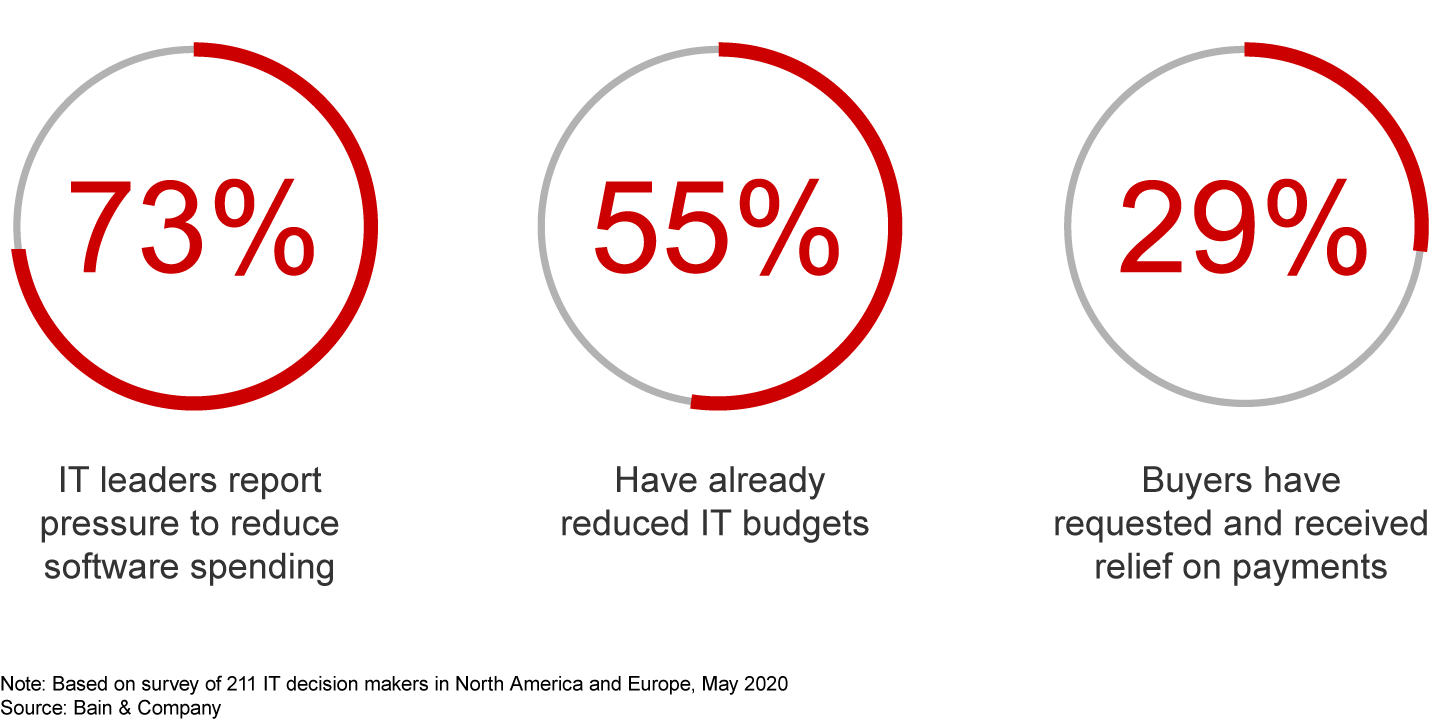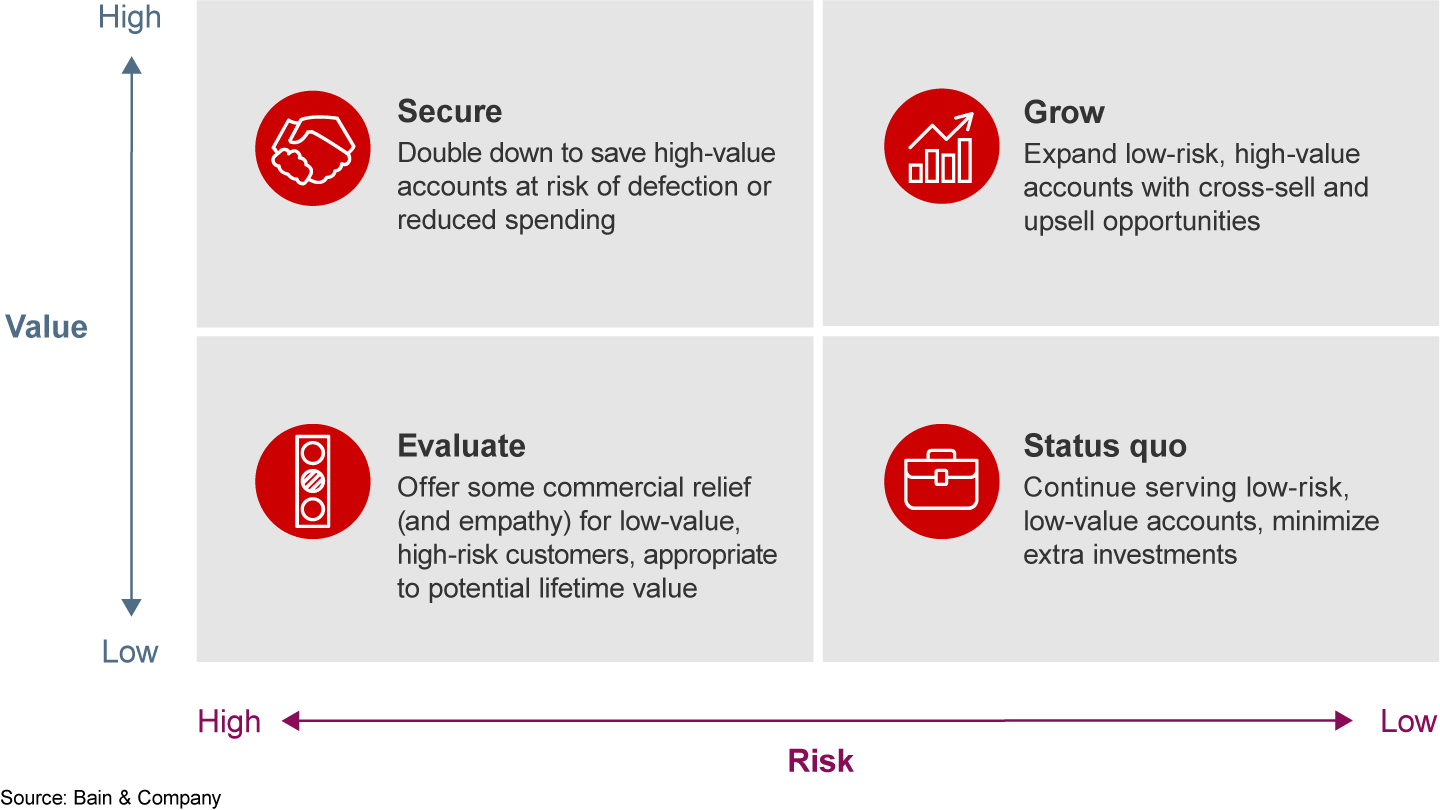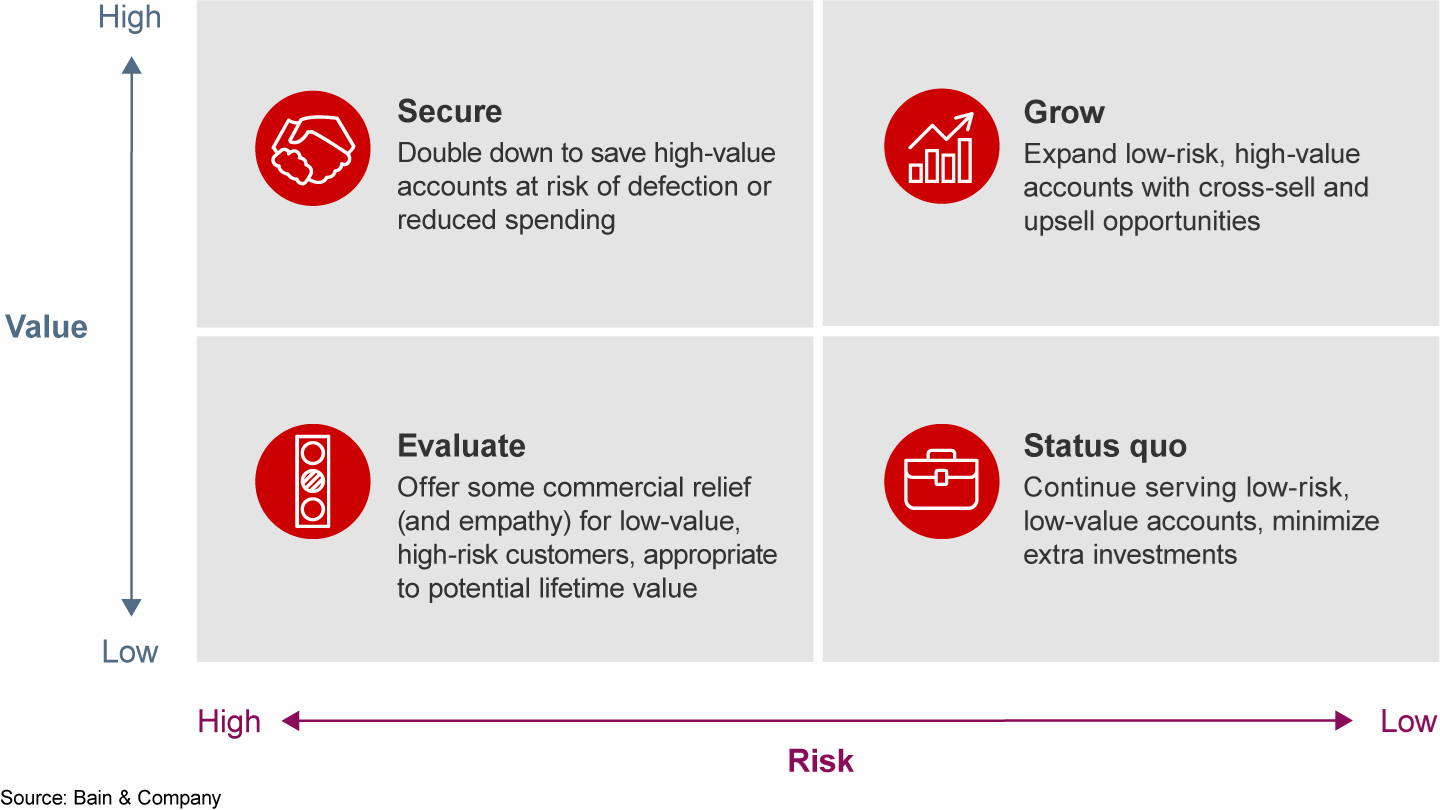Article

As the economic effects of the Covid-19 lockdowns ripple through economies, enterprise software vendors are looking for ways to help their customers stay connected and remain productive, while guarding their own renewal and retention rates.
Many are already seeing the pressures on their customers play out in ways that will have an impact on growth: In a May 2020 survey, nearly three-quarters of enterprise software customers said they were being asked to reduce spending, and 55% said they had cut IT budgets. Software vendors told us that about one in three customers had already asked for and received relief on payments.


With risks of churn climbing, it’s never been more important for software vendors to focus closely on renewals and retention rates. As always, this begins with an insightful segmentation of customers, taking into consideration factors such as size, previous spending and cross- and upselling opportunities. By mapping customers’ potential value against account risk (for churn or reduced spending), vendors can group them in ways that allow them to apply very specific commercial strategies—for example, investing heavily in high-potential customers who are at some risk of defecting (see Figure 1).


New risks, new strategies
Of course, all this remains true, but what’s new in this environment are the additional pressures that these customers may find themselves under. As their businesses confront the economic damage of the pandemic, their relative potential value needs to be reevaluated. In other words, every software seller should be preparing a fresh segmentation that takes into account their customers’ evolving economic position.
Doing so can yield some specific strategies appropriate to the moment.
- New customer needs. For example, while customers are under pressure to reduce technology spending, they’re also trying to harden their digital environments because of the increased risk of more people working remotely. For many vendors, this creates additional opportunities for upsell and cross-sell.
- Investments in retention. Many customers will also ask for payment relief, given the economic crunch of months in lockdown. Sometimes that’s not possible, but where it is, vendors may be able to structure long-term renewal packages that make the investment in retaining the customer worthwhile.
- Value in proven relationship. Finally, a time of unprecedented uncertainty may be the wrong time for customers to experiment with new and untested competitive technologies, or a “better mousetrap” from an innovative attacker. Some incumbents may successfully persuade customers to reduce risk by remaining with their current product suite, in exchange for which they can recommit to offer higher levels of service.

Macro Surveillance Platform
For more detail on the business implications of coronavirus from Bain’s Macro Trends Group, log on to the Macro Surveillance Platform. Learn more about the platform >
Cross-functional support for selling
Developing and applying the right commercial strategy to each account is becoming increasingly nuanced and complex as the segmentation process grows ever more refined and fine-grained. When assessing retention risk, vendors are applying pre-pandemic indicators (product usage, customer success indicators, support ticket patterns, customer loyalty metrics) as well as post-Covid-19 indicators on the financial health of the customer and outlook for its industry.
Every software seller should be preparing a fresh segmentation that takes into account their customers’ evolving economic position.
Given the range of factors involved, it’s increasingly common to see software vendors setting up cross-functional teams that can support the front line in Agile-like selling. In the current environment, these can be seen as a sort of virtual “win room” where teams can evaluate high priority accounts and create custom plans and offers. These environments act as a clearinghouse to absorb analysis, consider new information from the field and respond with appropriate resources for critical accounts. They can also function as incubators for new ideas, a place to test and refine approaches before rolling them out more broadly.
The scope of the current crisis is unprecedented in modern memory, and firms along with their people are likely to be grappling with new and uncertain conditions for months, if not years. For software vendors, a critical element in navigating these dynamics will be a fresh and up-to-date understanding of their customers’ financial positions, which will help them guide customers to the best options for their businesses. A revised segmentation will also prove critical for informing the sales and customer retention decisions that offer the best chance of securing their businesses during the crisis.

Coronavirus
The global Covid-19 pandemic has extracted a terrible human toll and spurred sweeping changes in the world economy. Across industries, executives have begun reassessing their strategies and repositioning their companies to thrive now and in the world beyond coronavirus.
The author would like to thank Sushant Khandelwal, a principal with Bain in Chicago, for his contributions to this article.